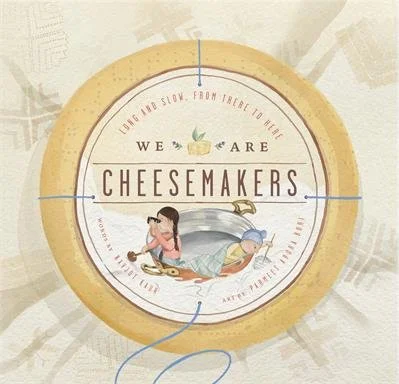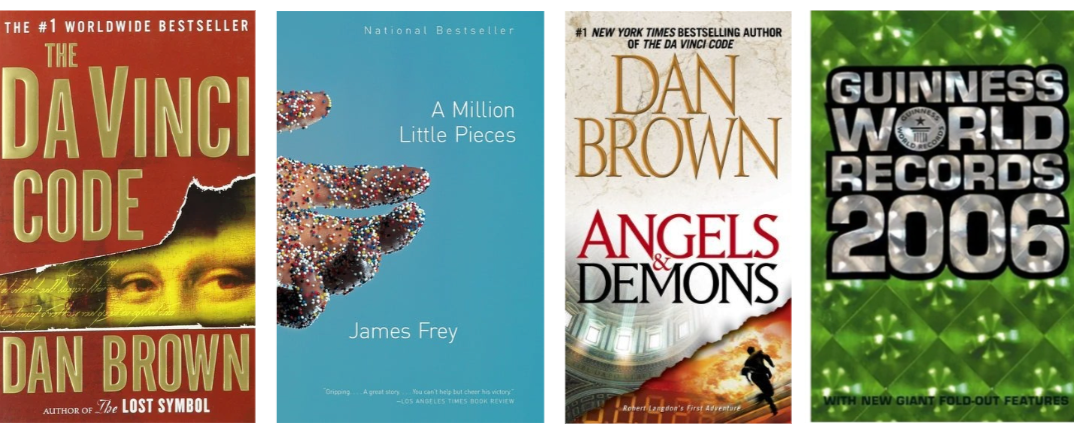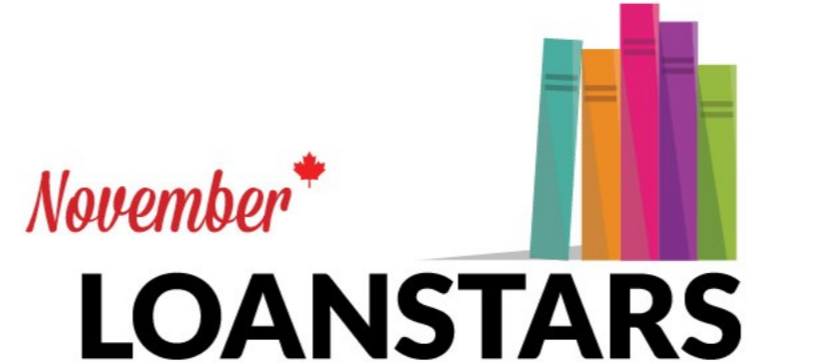This blog post continues a series where we'll demonstrate how to highlight diverse book content using the Thema subject classification system, which is overseen by EDItEUR, the international standards organization that also oversees the ONIX for Books metadata standard. You can review our blog coverage of Thema here, learn more about the basics here, and follow this series here.
Thema: real life examples
In 2020, EDItEUR released a comprehensive report on how to use Thema to communicate what we’ll call “diversity” attributes about a book. This was followed by what EDItEUR refers to as “worked examples,” where EDItEUR took real books in the market and made suggestions as to specific Thema subject categories and qualifiers that could be assigned to describe the book’s content. We're republishing these examples to show how flexible and adaptive Thema is, and to illustrate the effectiveness it offers as a solution to communicate so-called “diversity” attributes about the book's content.
Note: These suggestions do not necessarily represent the actual codes chosen by the publishers. They're meant to stimulate discussion and reflection rather than being authoritative statements of the correct way to categorize the particular books listed.
Where possible, we’ve complemented EDItEUR’s examples with Canadian titles and categorized accordingly. The same caveats apply and are worth repeating: The BookNet-selected codes do not necessarily represent the actual codes chosen by the publishers, and they're meant to stimulate discussion and reflection rather than being authoritative statements of the correct way to categorize the particular books listed.
Example: We Are Cheesemakers by Navjot Kaur and illustrated by Parmeet Arora Bori (Saffron Press)
According to Saffron Press, “We Are Cheesemakers brings ideas of food and climate justice to the forefront. This story shares the weight carried by migrant agricultural workers waiting for a stamp, so they too can have a place to call home.” Readers are “invited to come, gather, and eat.” This children’s fiction book tells a story of family, migration, and cooking, looking at the ingredients that provide nourishment, as well as work. With such a rich tapestry of topics, it’s no surprise that this book suggests many possible subject categorization opportunities.
Publisher-provided BISAC subjects
JUVENILE FICTION / Cooking & Food
JUVENILE FICTION / Diversity & Multicultural
JUVENILE FICTION / Social Themes / Emigration, Immigration & Refugees
Following the recommendations and best practice, the publisher has provided three BISAC subject categories. We will work from these, as well as the information provided in the book’s description, to suggest Thema coding for We Are Cheesemakers. We also benefit from having a book in hand in this situation, and will refer to the first-run hardcover edition.
Theoretical Thema categorization using the BISAC to Thema Translator
First stop in our theoretical Thema categorization is visiting BookNet Canada and the Book Industry Study Group’s BISAC to Thema Translator, available for free at bisactothema.biblioshare.org. This tool is an excellent first start for bibliographic data providers when implementing Thema for the first time or, perhaps, when adding Thema codes to backlist titles.
Once you log in to the translator, you're asked to enter the BISAC codes you wish to translate. You can also upload a list of ISBNs and the tool will pull the BISACs for each. Once the query is done, our translation suggested the following Thema code for each provided BISAC:
YFB - Children's / Teenage fiction: General, modern and contemporary fiction
YFB is the Thema equivalent to BISAC code JUV000000 for JUVENILE FICTION / General — a very bloated category and we strongly implore you not stop there. A quick search of any major online retailer will yield thousands of book results in such a general category. That's a dense marketplace and not one ripe for discovery of a niche title such as We Are Cheesemakers. Therefore, we must not simply rest on that code alone. Should we insist on providing that Thema code, we should be sure to supply additional codes to better place the book on the market for discoverability.
Rather than using YFB, the publisher could instead use Thema code YFN to indicate “Children’s / Teenage fiction: Family and home stories,” which may prove appropriate given the emphasis on family, in the description of the book:
A young family is forced to leave the land they love in search of a new home. Poisoned soils and dried up rivers have made farming impossible.
Holding onto memories of humble ingredients, Papa learns how to make a different kind of cheese and the long and slow process of waiting begins ….
Digging further into the results from the BISAC to Thema Translator, the following Thema categories listed below are suggested to accompany the YFB classification.
YNPC - Children's / Teenage general interest: Cooking and food
Whenever using the Translator, we recommend keeping a browser tab open with the online Thema subject categories hierarchy handy. Looking at the results for YNPC, we see a subject tree that indicates this subject is a Non Fiction category.
As code, YNPC is a child of the YN code for “Children’s / Teenage: General interest.” It's subject to the same guidelines as outlined for YN: “Use all YN* codes for: non-fiction works.” When approaching Thema from a North American mindset familiar with BISAC, one may be inclined to think that Non Fiction Thema codes cannot be combined with Fiction codes. This isn't the case: the rich selections available in Thema in the Non Fiction categories may be used with Fiction codes. According to Thema expert Chris Saynor, EDItEUR’s Standards Editor:
As long as there is a Fiction code (YF*) present and preferably flagged as MainSubject, data receivers will know it is a work of fiction.
We always say that all the so called Non Fiction codes in the Y* area have to work as Fiction codes as well as we often use stories to teach young people about a topic or to explore a topic.
As We Are Cheesemakers is not a Non Fiction work, we may include YNPC in our theoretical Thema categorization, as long as we provide a Children's Fiction code, which has been suggested already: YFB, to indicate “Children's / Teenage fiction: General, modern and contemporary fiction.”
Moving along, we have additional coding opportunities to consider.
YXP - Children's / Teenage personal and social topics: Diversity, equality, equity and inclusion
The next code that the BISAC to Thema Translator recommended can serve as an accompaniment for the recommended YFB code, such that we are abiding by the Second of Thema’s Six Golden Rules and not simply assigning a top level code.
YXP is recommended to be used for, “books that deal with these topics and stories with a particularly diverse cast of characters, or which illustrate accessibility, social justice, equity, diversity, or inclusivity (DEI) within the context of the story without necessarily being the subject of the story.” Speaking to the publisher’s inclusion of the BISAC code of JUV074000 for JUVENILE FICTION / Diversity & Multicultural, YXP is an appropriate inclusion in our theoretical Thema categorization. Moreover, the Thema use notes confirm YXP may be used with YF codes, such as our selected YFB, and should be accompanied with (a) value(s) from the list of Interest Qualifiers as appropriate.
YXZM - Children's / Teenage social topics: Migration / refugees
The next code that the BISAC to Thema Translator recommended can serve as an accompaniment for the recommended YFB code, alongside the YXP code.
The provided description for code YXZM is aligned well to the publisher’s inclusion of BISAC code JUV039250 for JUVENILE FICTION / Social Themes / Emigration, Immigration & Refugees: “also class here: asylum seekers, immigrants and immigration, emigrants and emigration, displacement, exile, forced journeys or relocation, diasporas.” As noted above, the Thema use notes confirm YXZM may be used with YF codes, such as our selected YFB code.
Additional theoretical Thema categorization
Moving beyond the suggestions of the BISAC to Thema Translator, the following subject codes may also appeal to the publisher:
YXZG - Children’s / Teenage social topics: Environment, sustainability and green issues
YNML - Children’s / Teenage general interest: Rural and farm life
But we mustn’t stop there. The brilliance of Thema is its use of qualifiers. Let’s consider those now.
Theoretical accompanying qualifiers
In Thema, qualifiers “refine the meaning of the subject categories.” Let’s see if we can add meaning by using them. Referring to the notes for EDItEUR’s online Thema browser:
Use INTEREST 5 Qualifier codes WITH appropriate subject codes for: indicating a variety of characteristics relating to the main content of the particular work. 5A age codes to qualify Y codes, 5H to indicate content about a particular holiday or event, 5L to indicate content about a particular age group / generation, 5P to indicate content about a particular grouping of people, etc. National extensions (i.e. 5-xx- format codes, where ‘xx’ indicates a country code) can be assigned by any user, and are not exclusive to users in the indicated country. All 5 codes must be used to describe a main content or topic of the work. DO NOT USE: as a marketing target audience code, the 5 Qualifier must relate to the main content of a work.
With that helpful instruction in mind, let’s review some possible qualifiers:
5AJ - Interest age: from c 8 years
5PBC - Relating to migrant groups / diaspora communities or peoples / groups with shared heritage
Accompanied by:
1A - World and/or
1QFG - Global South / Developing countries and/or
1FKA-IN-AP - Punjab and/or
1FKP-PK-F - Punjab
5PGE - Relating to Sikh people and groups
The options above speak to the global experience of migrants expressed in the book, as well as the specific depiction of the family featured in the story.
There's also the inclusion of Punjabi writing in the book. The Thema notes are clear, that Language Qualifier codes may be used with “appropriate subject codes for: indicating the language(s), language variant or expression of a language in a any particular form such as script, signed, written or spoken to which the book content applies — that is, the language the book is ABOUT, not the language the book is IN (the latter is described in other metadata) — such as a linguistics or literary studies work, a method for learning a language, a phrasebook or a dictionary.”
The publisher could consider providing qualifier 2BMP for Punjabi, but should consider the amount of language content in the text and consumer expectations. Is there significant enough inclusion of Punjabi text to consider the text as “about” Punjabi? The publisher would be most qualified to make a call here.
In summary, We Are Cheesemakers is a genre-busting story firmly classified as children’s fiction but with “teachable” inclusions sure to inspire interest from a wide range of readers, teachers, and librarians. Similar to the textile art woven through the pages of Cheesemakers, Thema is well-positioned to describe the tapestry of subjects the books contains, and the clarification provided by the qualifiers add additional potential for online discoverability.
Want more worked examples?
To read more examples as they are posted, subscribe to our weekly eNews or nab the RSS feed.















Expanded Thema worked examples do deeper dives into single book to showcase content and contributors relating to Indigeneity.